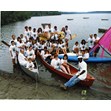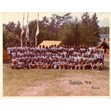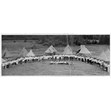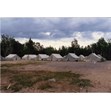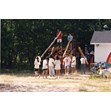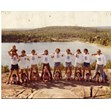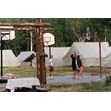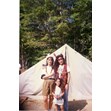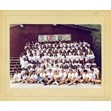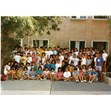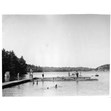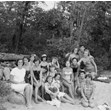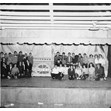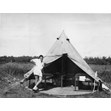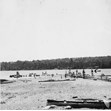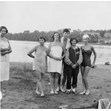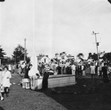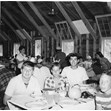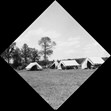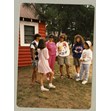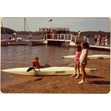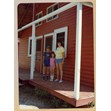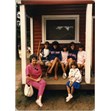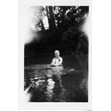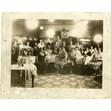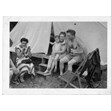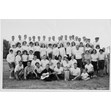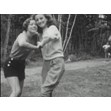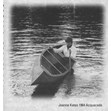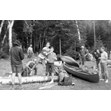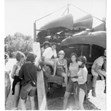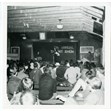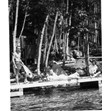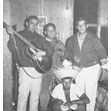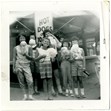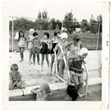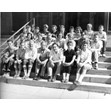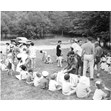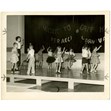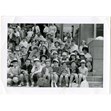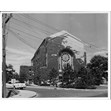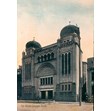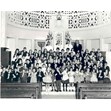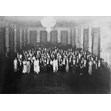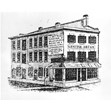- Address
- 52 East Fox Lake Rd.
- Source
- Landmarks
Established in 1933, Camp Winnebagoe was the first Jewish co-educational camp in Canada, owned and operated by Joe and Sadie Danson. First located on the Rouge River, just east of Toronto, the camp moved to a number of different lakeside locations in the Huntsville area, during its long history. In 1971, Camp Winnebagoe purchased Camp Ogama on Fox Lake and it has been there since, operated by the Lustig family. The camp’s programming includes secular and Jewish traditions including themed days, events honouring individual campers’ outstanding contributions and Friday Night Services.
- Address
- 52 East Fox Lake Rd.
- Time Period
- 1933-present
- Scope Note
- Established in 1933, Camp Winnebagoe was the first Jewish co-educational camp in Canada, owned and operated by Joe and Sadie Danson. First located on the Rouge River, just east of Toronto, the camp moved to a number of different lakeside locations in the Huntsville area, during its long history. In 1971, Camp Winnebagoe purchased Camp Ogama on Fox Lake and it has been there since, operated by the Lustig family. The camp’s programming includes secular and Jewish traditions including themed days, events honouring individual campers’ outstanding contributions and Friday Night Services.
- History
- In 1946, David Lieberman founded Camp Ogama, a private a co-educational overnight camp for children aged 6-16, on Fox Lake near Huntsville. It was touted to be “Canada’s most progressive camp for young Jewish boys and girls.” The socially conscience programming offered at Camp Ogama had a profound impact on counselors and campers alike producing highly influential alumni. Former camper journalist Earl Pomerantz reflects, “Camp inoculated us with a passion for justice. And it wasn’t write a check and see you later; this was money where your mouth is.”
- Category
- Camps and Resorts
- Source
- Landmarks
- Address
- 10 St Andrew Street
- Source
- Landmarks
- Address
- 10 St Andrew Street
- Time Period
- 1930
- History
- It was founded by poor Jewish immigrants from Russia (mostly Minsk) in 1912. The current Byzantine Revival building was completed in 1930. The congregation has had only three full-time rabbis: Meyer Levy (1916–1921), Meyer Zimmerman (1940–1954), and Shmuel Spero, who has served from 1988 to the present. It is the only Orthodox synagogue in downtown Toronto with a full-time rabbi, and the only one that holds daily services.
- Category
- Religious
- Source
- Landmarks
- Address
- 187 Brunswick Avenue
- Source
- Landmarks
During the early 1980s, newcomers to the synagogue introduced an alternative egalitarian service in the basement, which eventually became the main service in the sanctuary. The Synagogue underwent renovations in the early 1980s, and again more recently, in an effort to accommodate its new members and to provide for its future as a neighborhood synagogue. In recent years, the First Narayever has become one of the most well-attended and active synagogues in the downtown area.
- Address
- 187 Brunswick Avenue
- Time Period
- 1914-present
- Scope Note
- During the early 1980s, newcomers to the synagogue introduced an alternative egalitarian service in the basement, which eventually became the main service in the sanctuary. The Synagogue underwent renovations in the early 1980s, and again more recently, in an effort to accommodate its new members and to provide for its future as a neighborhood synagogue. In recent years, the First Narayever has become one of the most well-attended and active synagogues in the downtown area.
- Category
- Architecture
- Religious
- Source
- Landmarks
- Address
- 25 Bellevue Avenue
- Source
- Landmarks
The congregation of Rodfei Sholom Anshei Kiev, commonly known as the Kiever, dates back to 1912. The first few members had little means for funding a new synagogue in 1912, so services at this time were held in a rented house on Centre Avenue in the Ward.
- Address
- 25 Bellevue Avenue
- Time Period
- 1927-present
- Scope Note
- The congregation of Rodfei Sholom Anshei Kiev, commonly known as the Kiever, dates back to 1912. The first few members had little means for funding a new synagogue in 1912, so services at this time were held in a rented house on Centre Avenue in the Ward.
- History
- In 1917, the Kiever acquired a house at 25 Bellevue Avenue in Kensington Market and by 1923 the Kiever congregation raised enough funds to build a synagogue large enough to accommodate its growing numbers. The Kiever Executive contracted Benjamin Swartz, a Jewish architect, to design the current synagogue at 25 Bellevue, which replaced the two houses that had been used for services. The Synagogue was completed in 1927, after three years of construction. Today, the Kiever is a vibrant synagogue and one of a handful of synagogues remaining in the downtown area.
- Category
- Architecture
- Religious
- Source
- Landmarks
- Address
- 134 D'Arcy Street
- Source
- Landmarks
The Shedlover Shul was a small synagogue established by immigrants from Szydlow, Poland in 1914. The Yiddish and Russian pronunciation is Shidlov.
- Address
- 397 Markham Street
- Source
- Landmarks
The Shaarei Tzedek Congregation was founded by new Russian immigrants around 1901. The congregation’s first shul was situated originally on 29 Centre Avenue, south of Dundas on the east side of the street, in the vicinity of present-day Nathan Philips Square. Louis Gurofsky (1871-1934), a prominent member of the Jewish community and a business man, lived in a house at 397 Markham Street with his family. In 1937, following Gurofsky’s death in 1934, Shaarei Tzedek occupied the Markham Street house of the Gurofsky family and renovations were soon undertaken to convert the residence into a synagogue, designed by Benjamin Swartz.
- Address
- 397 Markham Street
- Time Period
- 1937-present
- Scope Note
- The Shaarei Tzedek Congregation was founded by new Russian immigrants around 1901. The congregation’s first shul was situated originally on 29 Centre Avenue, south of Dundas on the east side of the street, in the vicinity of present-day Nathan Philips Square. Louis Gurofsky (1871-1934), a prominent member of the Jewish community and a business man, lived in a house at 397 Markham Street with his family. In 1937, following Gurofsky’s death in 1934, Shaarei Tzedek occupied the Markham Street house of the Gurofsky family and renovations were soon undertaken to convert the residence into a synagogue, designed by Benjamin Swartz.
- History
- Following the Second World War, a second wave of Russian immigrants, many of whom were Holocaust survivors, found spiritual refuge at the Markham Street shul, and membership again began to rise. In the 1950s the shul employed the services of Rabbi Israel Frankel, a prominent Jewish scholar and one of the founders of the Toronto Jewish Public Library. As the Jewish community increasingly moved to the northern and outlying suburbs of Toronto, this general trend began to take its toll on the membership of the Shaarei Tzedek into the 1960s. The congregation was obliged to declare bankruptcy in 1968. However, a concerted fund-raising effort by Jewish community leaders in the area re-established the congregation in 1970, under the spiritual and administrative leadership of the shul’s president, Dr. Joseph Greenberg.
- Category
- Architecture
- Religious
- Source
- Landmarks
- Address
- 345 Spadina Avenue
- Source
- Landmarks
- Address
- 345 Spadina Avenue
- Time Period
- 1934-2009
- Category
- Retail store
- Source
- Landmarks
- Address
- 332 Spadina Avenue
- Source
- Landmarks
Walerstein's ice cream parlour was owned by Abraham Walerstein, who was originally from Hamilton, Ontario. He opened it in 1917 and it became a hang out for Social Democrats.
- Address
- 295 Spadina Avenue
- Source
- Landmarks
Harry and Jennie Shopsowitz started Shopsy's Delicatessen, a family business in 1921. Harry died in October 1945 and the business was passed along to his sons, Sam Shopsowitz and Izzy Shopsowitz. The business grew and became known as Shopsy’s. Eventually, Sam opened a meat processing plant, in addition to the restaurants, and by 1947, he became known as the "the corned beef king" in advertisements. Shopsy's corned beef and hotdogs were sold in grocery stores.
- Address
- 295 Spadina Avenue
- Time Period
- 1921-1983
- Scope Note
- Harry and Jennie Shopsowitz started Shopsy's Delicatessen, a family business in 1921. Harry died in October 1945 and the business was passed along to his sons, Sam Shopsowitz and Izzy Shopsowitz. The business grew and became known as Shopsy’s. Eventually, Sam opened a meat processing plant, in addition to the restaurants, and by 1947, he became known as the "the corned beef king" in advertisements. Shopsy's corned beef and hotdogs were sold in grocery stores.
- History
- Shopsy's became an institution in the city where the likes of Bob Hope, Al Waxman, Dennis Hull, and Scott Bowman were regular customers. Sam suffered a stroke in 1982 and died in September 1984 at age 63. After 62 years on Spadina, the restaurant moved to Yonge Street at Front Street in March 1983.
- Category
- Food-related business
- Source
- Landmarks
- Address
- 322 Spadina Avenue
- Source
- Landmarks
Opened in 1946 when the neighbourhood was still teaming with Jews working and living in the neighbourhood, this deli was one of the last to close in the area, in 1946. The Switzer family lived at 35 Nassau Street.
- Address
- 322 Spadina Avenue
- Time Period
- 1946-1991
- Scope Note
- Opened in 1946 when the neighbourhood was still teaming with Jews working and living in the neighbourhood, this deli was one of the last to close in the area, in 1946. The Switzer family lived at 35 Nassau Street.
- Category
- Food-related business
- Source
- Landmarks
- Address
- 338 Spadina Avenue
- Source
- Landmarks
United Bakers Dairy Restaurant was first established by Aaron and Sarah Ladovsky in 1912 on Dundas Street at Bay Street in the Ward. They moved the restaurant to 338 Spadina Ave. in 1920. Aaron Ladovsky was involved in a number of community organizations. He was instrumental in founding the Kieltzer Society of Toronto in 1913; a community based immigrant-aid association extending aid to Kielcers in Poland and around the world. Ladovsky remained an active member of the organization until his death on April 5, 1960. His restaurant provided a welcome gathering place for the Jewish community, serving traditional dishes and maintaining a friendly open-door policy. Aaron Ladovsky was known for his generosity and claimed that no one, whether they had money or not, left his restaurant hungry. The United Bakers' menu was mainly based on Sarah’s original recipes, and continues to be so to this day.
- Address
- 338 Spadina Avenue
- Time Period
- 1920-1986
- Scope Note
- United Bakers Dairy Restaurant was first established by Aaron and Sarah Ladovsky in 1912 on Dundas Street at Bay Street in the Ward. They moved the restaurant to 338 Spadina Ave. in 1920. Aaron Ladovsky was involved in a number of community organizations. He was instrumental in founding the Kieltzer Society of Toronto in 1913; a community based immigrant-aid association extending aid to Kielcers in Poland and around the world. Ladovsky remained an active member of the organization until his death on April 5, 1960. His restaurant provided a welcome gathering place for the Jewish community, serving traditional dishes and maintaining a friendly open-door policy. Aaron Ladovsky was known for his generosity and claimed that no one, whether they had money or not, left his restaurant hungry. The United Bakers' menu was mainly based on Sarah’s original recipes, and continues to be so to this day.
- History
- Aaron and Sarah had twin sons, Herman and Samuel. During the Second World War, Herman served overseas as an electrician in the Canadian army show with comics Johnny Wayne and Frank Shuster. After returning from the war, he married Dora Macklin in 1947, a registered nurse from Regina. He also began to take over management of the family business. Later, Herman's son Philip and daughter Ruth would follow in his footsteps, first helping to run the restaurant with him and later taking over management. United Bakers remained on Spadina Avenue for 66 years - until 1986 when it moved to its current location at 506 Lawrence Avenue West, off of Bathurst Street. Herman was an active fixture in the restaurant until his death on January 6, 2002. He also supported and was involved in the work of the Ontario Jewish Archives over the years.
- Category
- Food-related business
- Source
- Landmarks
- Address
- 275 Spadina Avenue
- Source
- Landmarks
Goldenberg's restaurant, which was kosher, was located at 275 Spadina Ave and was owned by Mr Joseph S. Goldenberg. He made additions to the restaurant in 1929 and 1935 by architect Benjamin Brown.
- Address
- 275 Spadina Avenue
- Time Period
- 1925-
- Scope Note
- Goldenberg's restaurant, which was kosher, was located at 275 Spadina Ave and was owned by Mr Joseph S. Goldenberg. He made additions to the restaurant in 1929 and 1935 by architect Benjamin Brown.
- History
- The restaurant was originally located in the Ward at 63 Elizabeth Street.
- Category
- Food-related business
- Source
- Landmarks
- Address
- 24 Cecil Street
- Source
- Landmarks
The Labour Zionist Order was an outgrowth of the Labour Zionist party in Israel (the Mapai party). They carried out a number of different functions. They were pro-labour and pro-Zionist. They acted as a mutual benefit society—the Labour Zionist Alliance or Farband, formally known as the Jewish National Workers Alliance or Farband Labour Zionist Order. They also operated a school for children called the Farband Folks Shule (later Bialik Hebrew Day School). There was a fundraising organization that they oversaw called the Israel Histadrut of Toronto whose annual campaign raised money for the Israel Histadrut in Israel (the Federation of Labour in Israel), founded in 1920. The campaign money was used to fund economic, trade union, military, social, and cultural activities in Israel, as well as to provide a comprehensive system of health insurance and hospital services to workers. The Israel Histadrut campaign in Toronto had an autonomous executive board, however it's activities were overseen by the Labour Zionist Order.
- Address
- 24 Cecil Street
- Time Period
- 1922-
- Scope Note
- The Labour Zionist Order was an outgrowth of the Labour Zionist party in Israel (the Mapai party). They carried out a number of different functions. They were pro-labour and pro-Zionist. They acted as a mutual benefit society—the Labour Zionist Alliance or Farband, formally known as the Jewish National Workers Alliance or Farband Labour Zionist Order. They also operated a school for children called the Farband Folks Shule (later Bialik Hebrew Day School). There was a fundraising organization that they oversaw called the Israel Histadrut of Toronto whose annual campaign raised money for the Israel Histadrut in Israel (the Federation of Labour in Israel), founded in 1920. The campaign money was used to fund economic, trade union, military, social, and cultural activities in Israel, as well as to provide a comprehensive system of health insurance and hospital services to workers. The Israel Histadrut campaign in Toronto had an autonomous executive board, however it's activities were overseen by the Labour Zionist Order.
- History
- The Labour Zionist Order purchased the house at 24 Cecil Street in 1922 and established a library in it. It was called the Farband Institute.
- Category
- Political
- Organization
- Source
- Landmarks
- Address
- 150 Beverley Street
- Source
- Landmarks
The Federation of Jewish Philanthropies of Toronto was made a charitable organization under the laws of Ontario in March, 1917. Its central goal was to end the frequent, uncontrolled, and competitive fund soliciting by a wide range of individual Toronto Jewish philanthropic and social service institutions and instead substitute a single coordinated city-wide community fundraising effort. This would ensure adequate and accountable funding for all its affiliated organizations and agencies in Toronto. The first office of the FJPT was at 206 Beverley St., but by 1924 it was headquartered at 218 Simcoe St. and by 1928 it had moved to 179 Beverley St., which was renamed "Scheuer House" after the FJPT's first president, Edmund Scheuer.
- Address
- 150 Beverley Street
- Time Period
- 1948-1983
- Scope Note
- The Federation of Jewish Philanthropies of Toronto was made a charitable organization under the laws of Ontario in March, 1917. Its central goal was to end the frequent, uncontrolled, and competitive fund soliciting by a wide range of individual Toronto Jewish philanthropic and social service institutions and instead substitute a single coordinated city-wide community fundraising effort. This would ensure adequate and accountable funding for all its affiliated organizations and agencies in Toronto. The first office of the FJPT was at 206 Beverley St., but by 1924 it was headquartered at 218 Simcoe St. and by 1928 it had moved to 179 Beverley St., which was renamed "Scheuer House" after the FJPT's first president, Edmund Scheuer.
- History
- They moved to Dundas Square in the late 1940s and then occupied a number of different buildings until they moved into their long term home at 150-152 Beverley Street in 1948 where they remained until July 1983. This building was called the J. Irving Olebaum. As the community moved north, the the J. Irving Oelbaum Centre building was eventually sold in 1983 and the United Jewish Welfare Fund moved to the Lipa Green building at Bathurst and Sheppard. The building on Beverley Street was mysteriously burned down.
- Category
- Social Service
- Organization
- Source
- Landmarks
- Address
- 33 Robert Street
- Source
- Landmarks
Lansdowne Public School at one time had a high concentration of Jewish students due to its close proximity to Kensginton Market. A 1944 study shows that 778 Jewish students attended Lansdowne Public School (now known as Lord Lansdowne Public School) in that year.
- Address
- 33 Robert Street
- Time Period
- 1888-
- Scope Note
- Lansdowne Public School at one time had a high concentration of Jewish students due to its close proximity to Kensginton Market. A 1944 study shows that 778 Jewish students attended Lansdowne Public School (now known as Lord Lansdowne Public School) in that year.
- Category
- Education
- Source
- Landmarks
- Address
- 150 Beverley Street
- Source
- Landmarks
By 1919 the plight of post-war Eastern European Jewry and the need for a united community voice for Canadian Jewry led to the creation of the Canadian Jewish Congress. Its founding meeting was held on March 16, 1919 in Montreal. Though it briefly maintained a tiny regional office in Toronto, the CJC remained inactive until 1933, when it fully reconvened by opening offices in Winnipeg, Montreal, and Toronto. Egmont L. Frankel was the first President of the new Central Division in Toronto. While the National Office in Montreal focused on the overarching issues of the social and economic rights of European Jewry, assistance for Jewish immigrants, and combating prejudice in Canada, the Toronto office dealt with local violent anti-Jewish demonstrations as well as continuing discrimination both in employment and in access to public recreational facilities. The structure was based on regular national biennial plenary conferences at which policies were delineated and national and regional executives were elected. Between plenary sessions, National and Regional Councils were in charge.
- Address
- 150 Beverley Street
- Time Period
- 1919-2012
- Scope Note
- By 1919 the plight of post-war Eastern European Jewry and the need for a united community voice for Canadian Jewry led to the creation of the Canadian Jewish Congress. Its founding meeting was held on March 16, 1919 in Montreal. Though it briefly maintained a tiny regional office in Toronto, the CJC remained inactive until 1933, when it fully reconvened by opening offices in Winnipeg, Montreal, and Toronto. Egmont L. Frankel was the first President of the new Central Division in Toronto. While the National Office in Montreal focused on the overarching issues of the social and economic rights of European Jewry, assistance for Jewish immigrants, and combating prejudice in Canada, the Toronto office dealt with local violent anti-Jewish demonstrations as well as continuing discrimination both in employment and in access to public recreational facilities. The structure was based on regular national biennial plenary conferences at which policies were delineated and national and regional executives were elected. Between plenary sessions, National and Regional Councils were in charge.
- History
- During the 1930s the Central Division Office moved several times and occupied offices in the following locations; Yonge St., the Bond St. Synagogue, Scheuer House, the Zionist Building, and its long-term home at 150-152 Beverley Street where it remained until its July, 1983 move to the Lipa Green Building in North York. Its activities expanded to include taking responsibility for Jewish educational standards but, by 1941, its main efforts shifted to support for Canada’s war effort. Immediately after the end of the war, the focus again shifted to Jewish immigration projects and the maintenance of Jewish identity in small communities.By 1950, the CJC’s use of the title “division” was changed to “region” to accommodate internal operational “divisions” within each region. Also, by then, the Central Region was busy expanding its programs for all Ontario Jewish communities, creating a province-wide council of youth groups, and working with the newly-created Bureau of Jewish Education (later Board of Jewish Education).
- Category
- Organization
- Source
- Landmarks
- Address
- 56 Maria Street
- Source
- Landmarks
Congregation Knesseth Israel was built in 1911 at 56 Maria Street in the Junction. Its architect was James Ellis, who between 1890 and 1912 designed over fifty buildings in the area. Early 20th century membership consisted mainly of new Jewish immigrants from Eastern Europe, many of whom lived and worked in the Junction as artisans, peddlers, shop owners and scrap and metal collectors. It is the oldest Toronto synagogue still in use as a synagogue today. The synagogue was restored in the early 1990s and remains active today. It is cared for by the descendants of the founding families.
- Address
- 56 Maria Street
- Time Period
- 1911-present
- Scope Note
- Congregation Knesseth Israel was built in 1911 at 56 Maria Street in the Junction. Its architect was James Ellis, who between 1890 and 1912 designed over fifty buildings in the area. Early 20th century membership consisted mainly of new Jewish immigrants from Eastern Europe, many of whom lived and worked in the Junction as artisans, peddlers, shop owners and scrap and metal collectors. It is the oldest Toronto synagogue still in use as a synagogue today. The synagogue was restored in the early 1990s and remains active today. It is cared for by the descendants of the founding families.
- Category
- Religious
- Architecture
- Source
- Landmarks
- Address
- 119 Spadina Avenue
- Source
- Landmarks
The Balfour Building is a Toronto landmark and designated heritage building that is located at 119 Spadina Avenue. It was designed by Benjamin Brown and was one of his most important commissions.
- Address
- 119 Spadina Avenue
- Time Period
- 1930-Present
- Scope Note
- The Balfour Building is a Toronto landmark and designated heritage building that is located at 119 Spadina Avenue. It was designed by Benjamin Brown and was one of his most important commissions.
- History
- Built in 1930, the building is twelve storeys high and crowned by a two storey tower. It is considered one of the finest examples of Art Deco architecture in Toronto. Initially, many Jewish garment businesses were located in the building. It currently houses offices for several graphic design and advertising firms, shops and a post office. The Balfour Building was declared a heritage building by order of City Council in July of 1989.
- Category
- Architecture
- Manufacturer
- Source
- Landmarks
- Address
- 225 Richmond Street West
- Source
- Landmarks
The Gelber Brothers, Louis and Moses, were born in what is now Austria in the late nineteenth century. Together they founded the Imperial Clothing Company, which later became Gelber Brothers Woolens. Their head office was designed by Benjamin Brown and was located in the Gelber Building at 217-225 Richmond Street West. Although selling woolens was their main business, the brothers had other investments, including ownership of a service station at Simcoe and Richmond and a public garage at 287 Spadina Avenue.
- Address
- 225 Richmond Street West
- Time Period
- 1923-present
- Scope Note
- The Gelber Brothers, Louis and Moses, were born in what is now Austria in the late nineteenth century. Together they founded the Imperial Clothing Company, which later became Gelber Brothers Woolens. Their head office was designed by Benjamin Brown and was located in the Gelber Building at 217-225 Richmond Street West. Although selling woolens was their main business, the brothers had other investments, including ownership of a service station at Simcoe and Richmond and a public garage at 287 Spadina Avenue.
- History
- The Gelber Brothers were prominent members of the Toronto Jewish community. They were involved in many philanthropic and charitable activities and were active in many Jewish organizations.
- Category
- Architecture
- Manufacturer
- Source
- Landmarks
- Address
- 197/199 Spadina Avenue
- Source
- Landmarks
The Empire Clothing Company building was another fine example of commercial buildings designed by Benjamin Brown. The building was located at 197/199 Spadina Avenue at the corner of Phoebe Street and Spadina Avenue. Brown built the original and a later addition to the building.
- Address
- 197/199 Spadina Avenue
- Time Period
- 1923-present
- Scope Note
- The Empire Clothing Company building was another fine example of commercial buildings designed by Benjamin Brown. The building was located at 197/199 Spadina Avenue at the corner of Phoebe Street and Spadina Avenue. Brown built the original and a later addition to the building.
- History
- Mr. Abraham M. Schiffer and Mr. William Leibel were the co-owners of Empire Clothing Co. and Cornell Tailored Clothing Ltd. The Empire Clothing Company Building served as the headquarters for both businesses. The Empire Clothing Company manufactured men's clothing and sold it wholesale. Leibel and Schiffer were also close neighbours, living only a few houses apart. William Leibel was a prominent member of the Toronto Jewish community. He was involved in many philanthropic and charitable activities and was active in many Jewish organizations, particularly in the area of Jewish education.
- Category
- Architecture
- Manufacturer
- Source
- Landmarks
- Address
- 21 Dundas Square
- Source
- Landmarks
The six-storey Hermant Annex and 14-storey eastern tower were designed by Benjamin Brown in 1920 and 1930 respectively. The building is named after Percy Hermant and served as the headquarters for his company, Imperial Optical. The Hermant Building was built at Wilton Square - which was later renamed Dundas Square. Benjamin Brown's office was located in the Hermant Building in the 1940s. The offices of the Canadian Jewish Review were housed in the building on Dundas Square. The buildings were designated as heritage buildings in 1990.
- Address
- 21 Dundas Square
- Time Period
- 1930-present
- Scope Note
- The six-storey Hermant Annex and 14-storey eastern tower were designed by Benjamin Brown in 1920 and 1930 respectively. The building is named after Percy Hermant and served as the headquarters for his company, Imperial Optical. The Hermant Building was built at Wilton Square - which was later renamed Dundas Square. Benjamin Brown's office was located in the Hermant Building in the 1940s. The offices of the Canadian Jewish Review were housed in the building on Dundas Square. The buildings were designated as heritage buildings in 1990.
- History
- Percy Hermant was born in Mogilev, Russia in 1882. In 1897, he immigrated to Canada, arriving in New Brunswick, where he began working as a dry goods peddler. In 1900, he founded the Imperial Optical Company, the first prescription lens business in the Maritimes. This company eventually grew to be the largest company of its kind in the British Commonwealth. In addition to his successful business, he was very involved with philanthropic and community activities within Jewish and non-Jewish circles. He sponsored academic and musical scholarships.
- Category
- Architecture
- Manufacturer
- Medical
- Source
- Landmarks
- Address
- 42 St George Street
- Source
- Landmarks
In 1919, Mr. Mendel Granatstein commissioned Benjamin Brown and Robert McConnell to design a three storey Classical Georgian style house located at 42 St. George Street. The house contained a unique feature -- a retractable roof used on Sukkoth. In 1947, the house was acquired by the University of Toronto and was used for a variety of purposes until it was demolished in 1999. The Bahen Centre for Information Technology now stands in its place.
- Address
- 42 St George Street
- Time Period
- 1919-1999
- Scope Note
- In 1919, Mr. Mendel Granatstein commissioned Benjamin Brown and Robert McConnell to design a three storey Classical Georgian style house located at 42 St. George Street. The house contained a unique feature -- a retractable roof used on Sukkoth. In 1947, the house was acquired by the University of Toronto and was used for a variety of purposes until it was demolished in 1999. The Bahen Centre for Information Technology now stands in its place.
- History
- Mr. Mendel Granatstein was a member of one of the early Jewish families of Toronto. In 1895, he founded M. Granatstein and Sons, Ltd., a junk dealing company, and by the early 20th century, he had become one of the most prosperous Jews in Toronto. Mr. Granatstein was also a community leader, having a hand in the foundation of Beth Jacob Synagogue.
- Category
- Architecture
- Residences
- Source
- Landmarks
- Address
- Dundas and Elizabeth Streets
- Source
- Landmarks
Dr. Max Kates was a Jewish dentist in Toronto. He was married to Lillian Kates, who was the founder of Camp Arowhon, a popular Jewish summer camp in Algonquin Park.
- Address
- Dundas and Elizabeth Streets
- Time Period
- ca. 1921-present
- Scope Note
- Dr. Max Kates was a Jewish dentist in Toronto. He was married to Lillian Kates, who was the founder of Camp Arowhon, a popular Jewish summer camp in Algonquin Park.
- History
- This building was designed by Benjamin Brown and was commissioned by Dr. Kates to house several stores and offices. It still stands today at the corner of Dundas and Elizabeth Streets in the heart of Toronto’s former St. John’s Ward; the area that first received the thousands of Jewish immigrants fleeing the pogroms in Russia and Eastern Europe.
- Category
- Architecture
- Retail store
- Source
- Landmarks
- Address
- 254-256 Victoria Street
- Source
- Landmarks
The six-storey Hermant Annex and 14-storey eastern tower were designed by Benjamin Brown in 1920 and 1930 respectively. The building is named after Percy Hermant and served as the headquarters for his company, Imperial Optical. The Hermant Building was built at Wilton Square - which was later renamed Dundas Square. Benjamin Brown's office was located in the Hermant Building in the 1940s. The offices of the Canadian Jewish Review were housed in the building on Dundas Square. The buildings were designated as heritage buildings in 1990.
- Address
- 254-256 Victoria Street
- Time Period
- 1920-present
- Scope Note
- The six-storey Hermant Annex and 14-storey eastern tower were designed by Benjamin Brown in 1920 and 1930 respectively. The building is named after Percy Hermant and served as the headquarters for his company, Imperial Optical. The Hermant Building was built at Wilton Square - which was later renamed Dundas Square. Benjamin Brown's office was located in the Hermant Building in the 1940s. The offices of the Canadian Jewish Review were housed in the building on Dundas Square. The buildings were designated as heritage buildings in 1990.
- History
- Percy Hermant was born in Mogilev, Russia in 1882. In 1897, he immigrated to Canada, arriving in New Brunswick, where he began working as a dry goods peddler. In 1900, he founded the Imperial Optical Company, the first prescription lens business in the Maritimes. This company eventually grew to be the largest company of its kind in the British Commonwealth. In addition to his successful business, he was very involved with philanthropic and community activities within Jewish and non-Jewish circles. He sponsored academic and musical scholarships.
- Category
- Architecture
- Manufacturer
- Medical
- Source
- Landmarks
- Address
- 6490 Tilton Lake Road
- Source
- Landmarks
Camp Solelim was founded in 1965 as a Young Judaean camp. Its name comes from Kibbutz HaSolelim in Israel which recognizes the builders who were integral to the establishment of the State of Israel. The program is infused with informal social, Jewish and Zionist educational programs. Like many of the camps founded earlier, campers are encouraged to participate in the functioning of the camp and derive a strong sense of responsibility through daily camp operations and camp projects. The camp still exists today and is jointly operated by the Toronto Zionist Council and Canadian Young Judaea.
- Address
- 6490 Tilton Lake Road
- Time Period
- 1965-present
- Scope Note
- Camp Solelim was founded in 1965 as a Young Judaean camp. Its name comes from Kibbutz HaSolelim in Israel which recognizes the builders who were integral to the establishment of the State of Israel. The program is infused with informal social, Jewish and Zionist educational programs. Like many of the camps founded earlier, campers are encouraged to participate in the functioning of the camp and derive a strong sense of responsibility through daily camp operations and camp projects. The camp still exists today and is jointly operated by the Toronto Zionist Council and Canadian Young Judaea.
- Category
- Camps and Resorts
- Source
- Landmarks
- Address
- 1110 Brydon Bay Road
- Source
- Landmarks
Camp Shalom was founded in 1948 by the Zionist Organization of Canada as a summer camp for youth between the ages of 9 and 13. Located in Gravenhurst, Ontario, Camp Shalom was one of the most successful of the Zionist camps. Camp Shalom was administered by the National Camps Association in conjunction with a regional committee, although, the daily operation and staffing of the camp was provided by Canadian Young Judaea. The camp still exists today and is jointly operated by the Toronto Zionist Council and Canadian Young Judaea.
- Address
- 1110 Brydon Bay Road
- Time Period
- 1948-present
- Scope Note
- Camp Shalom was founded in 1948 by the Zionist Organization of Canada as a summer camp for youth between the ages of 9 and 13. Located in Gravenhurst, Ontario, Camp Shalom was one of the most successful of the Zionist camps. Camp Shalom was administered by the National Camps Association in conjunction with a regional committee, although, the daily operation and staffing of the camp was provided by Canadian Young Judaea. The camp still exists today and is jointly operated by the Toronto Zionist Council and Canadian Young Judaea.
- Category
- Camps and Resorts
- Source
- Landmarks
- Address
- 1104 Fish Hatchery Road
- Source
- Landmarks
Camp Ramah has been in operation since 1960 and operates under the educational guidance of the National Ramah Commission and the Jewish Theological Seminary of America. It is governed by the Camp Ramah in Canada Committee. The camp is located in the Muskoka Region of Southern Ontario and is known for its experiential Jewish Education where campers learn Hebrew by singing together as a camp, participating in tefillot (prayers) on the beach and learning about Israel from Mishlachat (Israeli staff).
- Address
- 1104 Fish Hatchery Road
- Time Period
- 1960-present
- Scope Note
- Camp Ramah has been in operation since 1960 and operates under the educational guidance of the National Ramah Commission and the Jewish Theological Seminary of America. It is governed by the Camp Ramah in Canada Committee. The camp is located in the Muskoka Region of Southern Ontario and is known for its experiential Jewish Education where campers learn Hebrew by singing together as a camp, participating in tefillot (prayers) on the beach and learning about Israel from Mishlachat (Israeli staff).
- Category
- Camps and Resorts
- Source
- Landmarks
- Address
- 7861 Chemin River
- Source
- Landmarks
B’nai Brith’s Ottawa Lodge 885 was officially founded in February 1921 with 25 members. The Ottawa Lodge supported a Jewish Boy Scouts camp which evolved into the first Ottawa B’nai Brith summer camp for Jewish youth in 1935. Since 1935, the camp has delivered traditional camping programs to their community regardless of affiliation, denomination or financial means. Their mission has been to provide children and youth with the opportunity to experience the outdoors, learn new skills and develop life-long friendships while enhancing Jewish values, traditions, affiliation and community.
- Address
- 7861 Chemin River
- Time Period
- 1935-present
- Scope Note
- B’nai Brith’s Ottawa Lodge 885 was officially founded in February 1921 with 25 members. The Ottawa Lodge supported a Jewish Boy Scouts camp which evolved into the first Ottawa B’nai Brith summer camp for Jewish youth in 1935. Since 1935, the camp has delivered traditional camping programs to their community regardless of affiliation, denomination or financial means. Their mission has been to provide children and youth with the opportunity to experience the outdoors, learn new skills and develop life-long friendships while enhancing Jewish values, traditions, affiliation and community.
- Category
- Camps and Resorts
- Source
- Landmarks
- Address
- 1068 Burlmarie Road
- Source
- Landmarks
Located on the Lake of Bays in Muskoka, Camp New Moon began as a family lodge in the early 1930s. It was transformed into a children’s camp in the 1950s. In 1959, the camp was purchased by Al Goodman and Bert Fine (who ran Bathurst Manor Day Camp, later renamed to Forest Valley) who operated the camp together until around 1960 when Goodman assumed full ownership. Since the 1990s, the camp has been operated by Al’s son Jack and his wife Sue. The camp continues to flourish, providing campers the same experience that has existed for 60 years. There are now third generation campers attending.
- Address
- 1068 Burlmarie Road
- Time Period
- 1959-present
- Scope Note
- Located on the Lake of Bays in Muskoka, Camp New Moon began as a family lodge in the early 1930s. It was transformed into a children’s camp in the 1950s. In 1959, the camp was purchased by Al Goodman and Bert Fine (who ran Bathurst Manor Day Camp, later renamed to Forest Valley) who operated the camp together until around 1960 when Goodman assumed full ownership. Since the 1990s, the camp has been operated by Al’s son Jack and his wife Sue. The camp continues to flourish, providing campers the same experience that has existed for 60 years. There are now third generation campers attending.
- Category
- Camps and Resorts
- Source
- Landmarks
- Address
- Eldorado Park
- Source
- Landmarks
In 1935 the Labour League (later the United Jewish People's Order) bought Eldorado Park near Brampton, Ontario from the Canadian National Railway to establish Camp Naivelt. The camp opened in 1936 and functioned as a camp for children and families and ran a teacher training facility. Political and social activism was a significant part of Camp Naivelt. Its mission was to promote progressive socialist philosophy, tightly integrated with secular Jewish and Yiddish cultural traditions. A key element of the Camp Naivelt mission was to foster a deep and meaningful understanding of secular Jewish culture and folklore, the Yiddish language, music, folk art and dance.
- Address
- Eldorado Park
- Time Period
- 1936-present
- Scope Note
- In 1935 the Labour League (later the United Jewish People's Order) bought Eldorado Park near Brampton, Ontario from the Canadian National Railway to establish Camp Naivelt. The camp opened in 1936 and functioned as a camp for children and families and ran a teacher training facility. Political and social activism was a significant part of Camp Naivelt. Its mission was to promote progressive socialist philosophy, tightly integrated with secular Jewish and Yiddish cultural traditions. A key element of the Camp Naivelt mission was to foster a deep and meaningful understanding of secular Jewish culture and folklore, the Yiddish language, music, folk art and dance.
- History
- At its peak in the 1950s, Camp Naivelt had approximately 90 small cottages, a communal dining hall, a dance hall, a youth recreation hall, a grocery store and a camp office. The community also included a camp director’s cabin, arts and crafts cabin, infirmary, and a communal washroom and shower area known as, “The Ritz”. Activities ranged from lectures on current issues, films, poetry readings, Yiddish theatre, kultur vinkls (cultural corners), folk dancing and singing to boating and swimming, volleyball and other sports tournaments, hikes and nature walks and campfires. Some 300 children would attend camp during the summer and, at its height during the 1940s and 1950s, as many as 5000 people would fill Camp Naivelt on a summer weekend.
- Category
- Camps and Resorts
- Source
- Landmarks
- Address
- 1485 Murphy Rd.
- Source
- Landmarks
Camp Moshava was founded in 1962 in the Kawartha Lakes Region on Lake Buckhorn. Affiliated with the Zionist youth movement B’nei Akiva, Moshava is one of several camps they operate in North America.
- Address
- 1485 Murphy Rd.
- Time Period
- 1962-present
- Scope Note
- Camp Moshava was founded in 1962 in the Kawartha Lakes Region on Lake Buckhorn. Affiliated with the Zionist youth movement B’nei Akiva, Moshava is one of several camps they operate in North America.
- History
- Historically, the primary aim of the movement was to promote avodah, specifically agricultural work in the field and aliyah, migration to Israel. Today, Camp Moshava provides an informal environment for campers to encounter Judaism through programming and observances that promote Torah education, prayer and Zionist ideals.
- Category
- Camps and Resorts
- Source
- Landmarks
- Address
- 1 Arowhon Road
- Source
- Landmarks
Camp Arowhon has been owned and operated by the Kates family since 1934. It is located on a private lake in Algonquin Provincial Park. Matriarch Lillian Kates established this family business, three generations long, in 1934. A formidable entrepreneur, Kates was undeterred by obstacles of the day such as adventurous travel through Ontario’s wilderness, anti-Semitism, sexism and a lack of financial resources. She passionately pursued her dream of creating a unique Canadian summer camp and single handedly recruited all of its first campers.
- Address
- 1 Arowhon Road
- Time Period
- 1934-present
- Scope Note
- Camp Arowhon has been owned and operated by the Kates family since 1934. It is located on a private lake in Algonquin Provincial Park. Matriarch Lillian Kates established this family business, three generations long, in 1934. A formidable entrepreneur, Kates was undeterred by obstacles of the day such as adventurous travel through Ontario’s wilderness, anti-Semitism, sexism and a lack of financial resources. She passionately pursued her dream of creating a unique Canadian summer camp and single handedly recruited all of its first campers.
- History
- When Kates’ son Eugene took over as director, he set up Arowhon’s unique system where campers independently chose their daily activities. True to the inspiration of its name-Samuel Butler’s Utopian novel “Nowhere” spelt backwards “Erehwon”-Arowhon did indeed become “a perfect world for children”. Today the camp is operated by Eugene’s daughter Joanne Kates, the celebrated food critic.
- Category
- Camps and Resorts
- Source
- Landmarks
- Address
- 1612 Dudley Rd
- Source
- Landmarks
In 1958, Camp Timberlane was founded by Barry and Philomena Lowes on the shores of the Lake of Two Islands in the Haliburton Highlands. Their vision was to create a camping experience that would build confidence, spirit and leadership. They strived to provide a nurturing environment that recognized a person’s uniqueness and where values would be learned that would benefit them over a lifetime. The tradition continues today and is being carried out by the present Director and Owner Corey Mandell who attended Timberlane as a camper and counselor.
- Address
- 1612 Dudley Rd
- Time Period
- 1958-present
- Scope Note
- In 1958, Camp Timberlane was founded by Barry and Philomena Lowes on the shores of the Lake of Two Islands in the Haliburton Highlands. Their vision was to create a camping experience that would build confidence, spirit and leadership. They strived to provide a nurturing environment that recognized a person’s uniqueness and where values would be learned that would benefit them over a lifetime. The tradition continues today and is being carried out by the present Director and Owner Corey Mandell who attended Timberlane as a camper and counselor.
- Category
- Camps and Resorts
- Source
- Landmarks
- Address
- 1335 Camp White Pine Ct.
- Source
- Landmarks
Camp White Pine, a children’s summer camp located in the Haliburton Highlands outside of Toronto was founded by Joe Kronick in 1956. Joe's son, Adam, took over as director of Camp White Pine in 1987. He has run the camp with his wife, Dana, as co-Director since 1990.
- Address
- 1335 Camp White Pine Ct.
- Time Period
- 1956-present
- Scope Note
- Camp White Pine, a children’s summer camp located in the Haliburton Highlands outside of Toronto was founded by Joe Kronick in 1956. Joe's son, Adam, took over as director of Camp White Pine in 1987. He has run the camp with his wife, Dana, as co-Director since 1990.
- Category
- Camps and Resorts
- Source
- Landmarks
- Address
- 1030 Lower Lions Club Road
- Source
- Landmarks
Camp Kadimah is a day camp for children between the ages of 2-14 operated by the Hamilton Jewish Community Centre.
- Address
- 1 Camp Gesher’s Rd
- Source
- Landmarks
Camp Gesher originated in 1963 from a merger between Camp Revivim (serving campers from Ottawa and Toronto) and Camp Kissufim (serving campers from Montreal). It is part of Habonim Dror, the Labour-Zionist youth movement and is located near Cloyne, Ontario.
- Address
- 1 Camp Gesher’s Rd
- Time Period
- 1963-present
- Scope Note
- Camp Gesher originated in 1963 from a merger between Camp Revivim (serving campers from Ottawa and Toronto) and Camp Kissufim (serving campers from Montreal). It is part of Habonim Dror, the Labour-Zionist youth movement and is located near Cloyne, Ontario.
- History
- Camp Gesher’s small size is central to the spirit of the camp where a culture of acceptance, individuality and mutual respect is fostered. The camp philosophy revolves around socialist ideals and its structure is similar to that of a kibbutz. Hebrew is used in day-to-day conversation and there are many opportunities to learn about Jewish and Israeli history and culture. There is a kosher kitchen and Shabbat and Havdalah are celebrated.
- Category
- Camps and Resorts
- Source
- Landmarks
- Address
- 1950 Bathurst St.
- Source
- Landmarks
Holy Blossom was the first Jewish congregation in Ontario, established in September 1856 as the Toronto Hebrew Congregation. Many of Toronto’s earliest Jewish families were members of this congregation and were also responsible for establishing the city’s first Jewish cemetery on Pape Avenue. For 20 years, the congregation rented space over a drug store on Yonge Street until 1876 when a Synagogue was built on Richmond Street West. As the congregation grew, it moved to a new building on Bond Street in 1897, designed in the Byzantine Revival style (this building is now St. George’s Greek Orthodox Church).
- Address
- 1950 Bathurst St.
- Time Period
- 1937-present
- Scope Note
- Holy Blossom was the first Jewish congregation in Ontario, established in September 1856 as the Toronto Hebrew Congregation. Many of Toronto’s earliest Jewish families were members of this congregation and were also responsible for establishing the city’s first Jewish cemetery on Pape Avenue. For 20 years, the congregation rented space over a drug store on Yonge Street until 1876 when a Synagogue was built on Richmond Street West. As the congregation grew, it moved to a new building on Bond Street in 1897, designed in the Byzantine Revival style (this building is now St. George’s Greek Orthodox Church).
- History
- While Holy Blossom was first established as an Orthodox congregation, in the late 1800s a move toward Reform practices began, including changes to services and the introduction of music and family seating. In 1920, Holy Blossom became a Reform Congregation affiliated with the Union of American Hebrew Congregations (now the Union for Reform Judaism), and has remained a leading Reform Synagogue in Canada ever since. By the 1930s, Holy Blossom had outgrown its Bond Street location and a fundraising campaign began to raise money to purchase property and build a new larger synagogue. In 1937, Holy Blossom moved to its present location on Bathurst south of Eglinton, designed in the the Romanesque Revival style by architects Chapman and Oxley with Maurice Dalvin Klein.
- Category
- Religious
- Architecture
- Source
- Landmarks
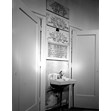
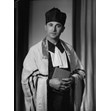
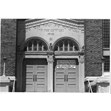
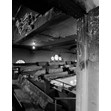
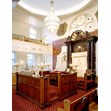
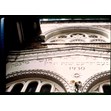
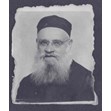
![Minsker Synagogue, interior sanctuary, Toronto, [ca. 1977]. Ontario Jewish Archives, Blankenstein Family Heritage Centre, item 2063|](/media/Digital Assets/2063.jpg?width=111&height=111&404=no-img.jpg)


![First Narayever Synagogue, interior, Toronto, [ca. 1977]. Ontario Jewish Archives, Blankenstein Family Heritage Centre, item 2075.|](/media/Digital Assets/2075.jpg?width=111&height=111&404=no-img.jpg)

![Procession at Kiever Synagogue, Toronto, [194-]. Ontario Jewish Archives, Blankenstein Family Heritage Centre, item 535.|The man on the second from the right is Isaac Belfer who was the Gabbai at the Kiever for many years.](/media/Digital Assets/535.jpg?width=111&height=111&404=no-img.jpg)


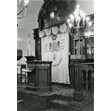
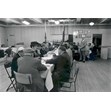
![Rabbi Solomon Langner in Kiever Synagogue, Toronto, [195-?]. Ontario Jewish Archives, Blankenstein Family Heritage Centre, item #533|When the Kiever was completed 1927, Rabbi Solomon Langner became the spiritual leader of the congregation and continued in this capacity until his death in 1973. Rabbi Langner was the son of Rabbi Moishe Langner, the Strettiner Rebbe of Toronto. His three brothers were Abraham, Isaac, and Mordechai, who all became rabbis as well.](/media/Digital Assets/533.jpg?width=111&height=111&404=no-img.jpg)
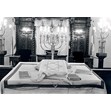
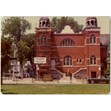
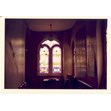
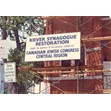
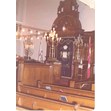
![Sol Edell (left), Chairman of TJC-CJC Archives Committee discusses restoration plans for the Kiever Synagogue with architect Martin Mendelow (right), [1975?]. Ontario Jewish Archives, Blankenstein Family Heritage Centre, item 1794.|](/media/Digital Assets/1794.jpg?width=111&height=111&404=no-img.jpg)
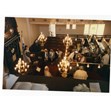
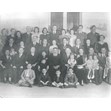
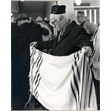
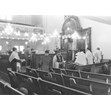
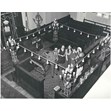
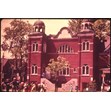

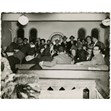

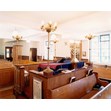

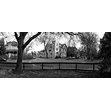
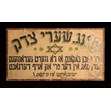
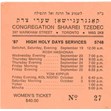

![Abraham Walerstein in front of ice cream parlour, 332 Spadina Avenue, [1925 or 1926]. Ontario Jewish Archives, Blankenstein Family Heritage Centre, item 2536.|](/media/Digital Assets/2536.jpg?width=111&height=111&404=no-img.jpg)
![Walerstein's Ice Cream Parlour interior, Spadina Ave., Toronto, [1917 or 1918]. Ontario Jewish Archives, Blankenstein Family Heritage Centre, item 1922.|The store opened in 1917. Pictured left to right are: Taube Walerstein, Abraham Walerstein, Benzion Hyman.](/media/Digital Assets/1922.jpg?width=111&height=111&404=no-img.jpg)
![Exterior view of Walerstein's Ice Cream Parlour, 332 Spadina Ave., Toronto, [1922 or 1923]. Ontario Jewish Archives, Blankenstein Family Heritage Centre, item 2534.|Left to right Sarah Walerstein, Taube Walerstein (mother). You can see from the writing on the window that they sold a lot more than just ice cream including tobacco products and Welsh's jam.](/media/Digital Assets/2534.jpg?width=111&height=111&404=no-img.jpg)

![Izzy Shopsowitz and Woody Herman, [197-?]. Ontario Jewish Archives, Blankenstein Family Heritage Centre, fonds 37, series 4, item 44.|Izzy [Isaac] Shopsowitz was co-owner, along with his brother Sam, of Shopsy's Delicatessan. He was a member of Toronto's Beth Tzedec Synagogue. Woody (Woodrow) Charles Herman (1931-1987) was a well-known jazz musician and big band leader.](/media/Digital Assets/37-Gilbert/F37_s4_i044.jpg?width=111&height=111&404=no-img.jpg)

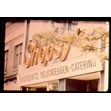
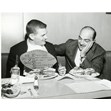
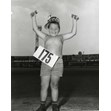
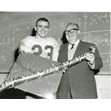

![United Bakers Restaurant, Spadina Ave., Toronto, [between 1925 and 1928]. Ontario Jewish Archives, Blankenstein Family Heritage Centre, fonds 83, file 9, item 35.|Item is a photograph of (left to right) Rose Haniford Green, Sarah Ladovsky, and Mary Haniford Pancer in front of United Bakers Dairy Restaurant. Rose and Mary are sisters and Sarah is their aunt.](/media/Digital Assets/3050.jpg?width=111&height=111&404=no-img.jpg)
![Aaron Ladovsky, Toronto, [ca. 1910]. Ontario Jewish Archives, Blankenstein Family Heritage Centre, fonds 83, file 9, item 9.|Portrait of Aaron Ladovsky in a suit and bowler hat.](/media/Digital Assets/1618.jpg?width=111&height=111&404=no-img.jpg)
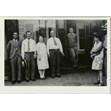
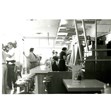
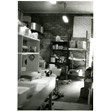
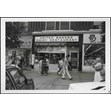
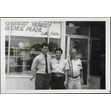
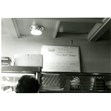

![Looking south on east side of Spadina Ave. north of Dundas St., Toronto, [1947 or 1948]. Ontario Jewish Archives, Blankenstein Family Heritage Centre, item 4034.|This photograph is of Joseph Barsh with his son Preston and his wife Tania. Note the word kosher in Yiddish appears on the signage.](/media/Digital Assets/4034.jpg?width=111&height=111&404=no-img.jpg)
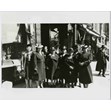

![Club One, Pioneer Women, Toronto, [ca. 1948-1952]. Ontario Jewish Archives, Blankenstein Family Heritage Centre, item 4749.|](/media/Digital Assets/4749.jpg?width=111&height=111&404=no-img.jpg)
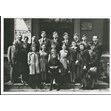

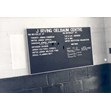

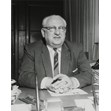

![Lansdowne School manual training class, [ca. 1913]. Ontario Jewish Archives, Blankenstein Family Heritage Centre, fonds 25, series 1, item 7.|Abe Levine is located fourth from the right.](/media/Digital Assets/25-Levine and Cass/Series 1/F25_s1_i7.jpg?width=111&height=111&404=no-img.jpg)
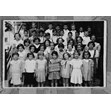
![Etta Taube on a class outing, [192-]. Ontario Jewish Archives, Blankenstein Family Heritage Centre, item 4531.|This item is a photograph of a Lansdowne School class outing in Toronto. The photograph features a large group of kids assembled in a park. Etta Taube (m. Mrs. John Sherman) is pictured seated in the front row, second from the left.](/media/Digital Assets/4531.jpg?width=111&height=111&404=no-img.jpg)
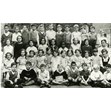
![Lansdowne School manual training class, [ca. 1915]. Ontario Jewish Archives, Blankenstein Family Heritage Centre, fonds 25, series 1, item 8.|Harry Levine is pictured fourth from the right.](/media/Digital Assets/25-Levine and Cass/Series 1/F25_s1_i8.jpg?width=111&height=111&404=no-img.jpg)
![Lansdowne School manual training class, [ca. 1915]. Ontario Jewish Archives, Blankenstein Family Heritage Centre, fonds 25, series 1, item 9.|Item is a photograph of the teacher and students in the Lansdowne School manual training class in Toronto. Many of the boys are wearing aprons and are holding various woodworking tools. The second boy from the right in the front row may be Abe Levine.](/media/Digital Assets/25-Levine and Cass/Series 1/F25_s1_i9.jpg?width=111&height=111&404=no-img.jpg)

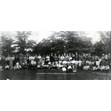
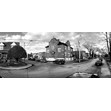
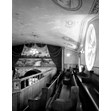

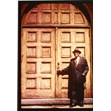


![Shiffer-Hillman suit brush, [194-]. Ontario Jewish Archives, Blankenstein Family Heritage Centre, fonds 22, item 151.|The Balfour Building was designed and built for the Shiffer-Hillman company, who later leased out space to other garment businesses.](/media/Digital Assets/Artifacts/9055.jpg?width=111&height=111&404=no-img.jpg)

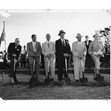
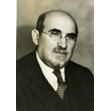



![Perspective drawing of the Hermant Building at 21 Dundas Square, [between 1929 and 1930]. Ontario Jewish Archives, Blankenstein Family Heritage Centre, fonds 49, series 3, file 97.|](/media/Digital Assets/49-Brown/49-3-97/F49-s3-f97_i3.jpg?width=111&height=111&404=no-img.jpg)
![Ground floor plan of lavatories of the Hermant Building at 21 Dundas Square, [between 1929 and 1930]. Ontario Jewish Archives, Blankenstein Family Heritage Centre, fonds 49, series 3, file 97.|](/media/Digital Assets/49-Brown/49-3-97/F49-s3-f97_i10.jpg?width=111&height=111&404=no-img.jpg)
![South elevation drawing of the Hermant Building at 21 Dundas Square, [between 1929 and 1930]. Ontario Jewish Archives, Blankenstein Family Heritage Centre, fonds 49, series 3, file 97.|](/media/Digital Assets/49-Brown/49-3-97/F49-s3-f97_i5.jpg?width=111&height=111&404=no-img.jpg)




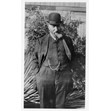

![South elevation to Dundas Street. Store building for Dr. Max Kates at Dundas and Elizabeth Streets, [between 1921 and 1924]. Ontario Jewish Archives, Blankenstein Family Heritage Centre, fonds 49, series 3 file 88.|](/media/Digital Assets/49-Brown/F49_s3_f88_i001b.jpg?width=111&height=111&404=no-img.jpg)

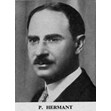



![Camp Solelim group photo on the beach, [198-]. Ontario Jewish Archives, Blankenstein Family Heritage Centre, accession 2014-10-3.|](/media/Digital Assets/2014-10-3/2014-10-3_010.jpg?width=111&height=111&404=no-img.jpg)
